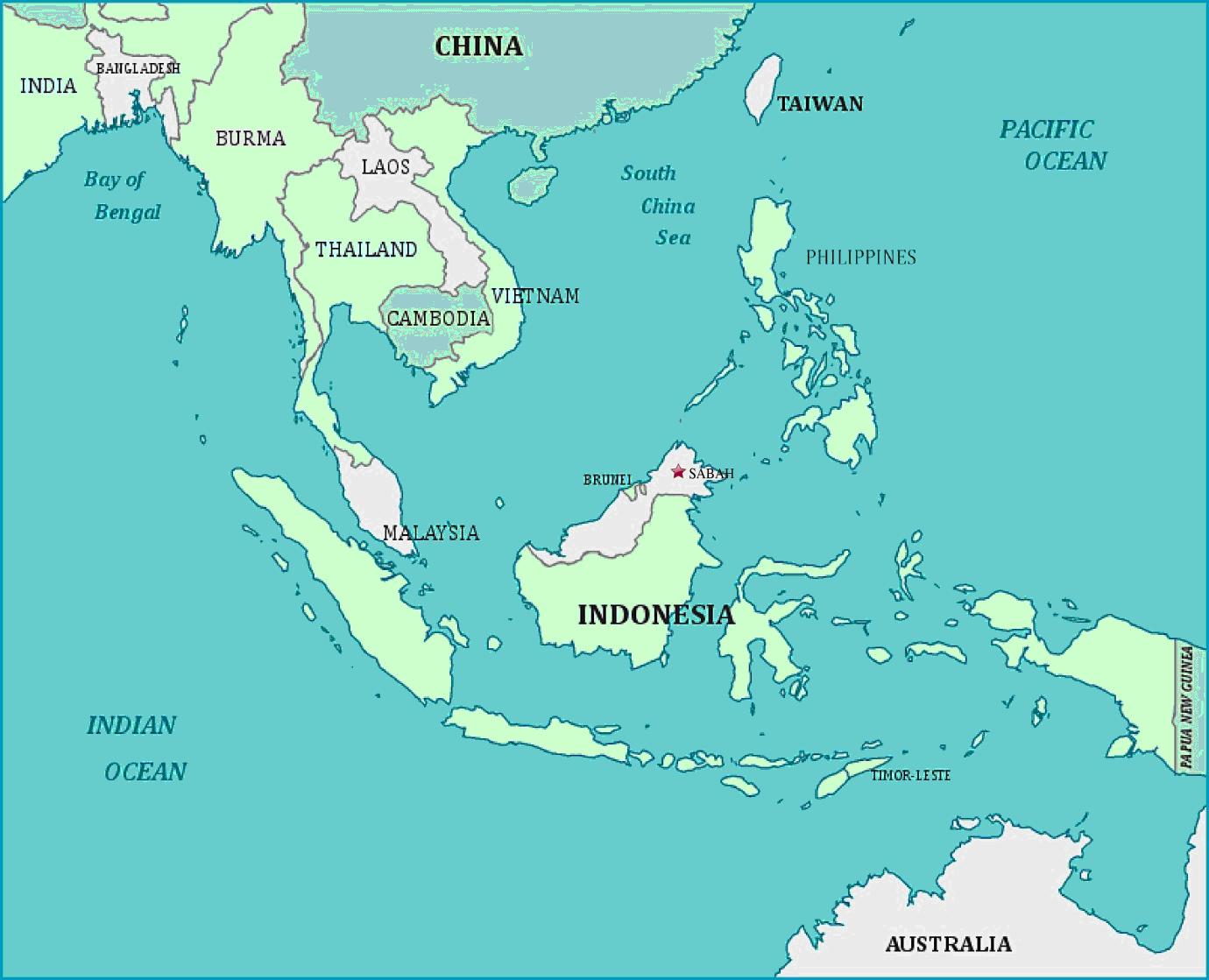BotakChinPeng posted on 31-12-2013 09:31 PM
Of course there was no reaction from Malaysia. Why would the malaysian govt make any statement eve ...



On 26 March 2013, the People’s Liberation Army Navy conducted a major naval exercise in the South China Sea, close to what China calls Zhengmu Reef. News of the exercise would have been lost amid the constant stream of reports on the disputed waters had it not been for the fact that Zhengmu Reef, which is known as Beting Serupai in Malay and James Shoal in English, lies at the southernmost tip of China’s expansive maritime and island claims in the South China Sea. More specifically, it’s some 80 kilometres away from Malaysia and 1,800 kilometres from the Chinese mainland. Rarely have the Chinese made their presence felt at the extremities of their maritime claims in the region. And never have they brought such firepower with them—four vessels led by the PLA Navy’s latest amphibious landing ship, the Jinggangshan.
While serving as a sign of China’s rising assertiveness, the exercise was also notable for the distinct lack of a visible public reaction from Malaysia. Neither the Malaysian Prime Minister nor the Foreign Ministry has made even the most perfunctory statement on the matter.
BotakChinPeng posted on 31-12-2013 09:31 PM
Of course there was no reaction from Malaysia. Why would the malaysian govt make any statement eve ...
robotech posted on 31-12-2013 09:38 PM
There's reasons why people don't take you seriously. Stands to reasons people take your statements ...

Never mind that a Malaysian naval offshore patrol vessel, the KD Perak, monitored the exercise and issued orders for the PLA Navy to leave the area.
robotech posted on 31-12-2013 09:38 PM
There's reasons why people don't take you seriously. Stands to reasons people take your statements ...
There's reasons why people don't take you seriously.

robotech posted on 31-12-2013 09:05 PM
China and Malaysia To Hold Maritime Exercises: What Gives?
China and Malaysia will conduct their ...
And never mind that a standard protest may have been quietly expressed through diplomatic channels.”
robotech posted on 31-12-2013 09:05 PM
China and Malaysia To Hold Maritime Exercises: What Gives?
China and Malaysia will conduct their ...
” It continues that the marine corps announcement "follows a number of unpublicised incursions by Chinese naval and maritime surveillance forces into Malaysian waters off East Malaysia and the Malaysian portion of the Spratly Islands.”

spiderman80 posted on 31-12-2013 11:09 PM
The legendary man with special hole with frequent PMS talks shit again with wild imaginary facts of ...
BotakChinPeng posted on 31-12-2013 11:30 PM
You having your period again dude ? Go argue with your legendary man some place else

robotech posted on 1-1-2014 01:03 AM
Seriously though, just put on the /ignore/ button when Botak's /rantmode/ is in full mode.
Not wo ...

Untuk memprediksi perilaku strategis Cina di masa depan di kawasan Asia Pasifik, perlu ditinjau secara seksama perilaku strategis Beijing di masa lalu. Adapun rentang waktunya adalah sejak 1949 hingga saat ini atau sejak berdirinya rezim komunis di Cina yang menggusur Kuomintang ke Taiwan. Senantiasa akan ditemukan benang merah perilaku strategis Cina di masa lalu, di masa kini dan di masa yang akan datang.
Salah satu temuan dalam tinjauan terhadap perilaku strategis Cina adalah negeri itu gemar untuk melakukan ekspansi wilayah demi menjamin keamanannya. Ekspansi wilayah itu dapat dilihat di wilayah perbatasan dengan India, di mana sebelum rezim komunis berkuasa Peking tak memiliki perbatasan langsung dengan New Delhi. Setelah Cina menginvasi Tibet pada 1950, mulailah era di mana Cina mengklaim dan menguasai sejumlah wilayah India yang berdasarkan perjanjian Inggris-Tibet di masa lalu diakui sebagai wilayah milik negeri Sungai Gangga. Bahkan kini Cina pun mengklaim negara bagian Arunachal Pradesh sebagai wilayahnya. Klaim itu terkait dengan kepentingan Beijing untuk "menstabilkan" Tibet yang terus bergolak setelah dicaplok pada 1950.
Kalau mengacu pada perilaku strategis Cina di daratan, sangat terang benderang dan jelas kalau Beijing hobi mencaplok wilayah negara lain demi kepentingan keamanannya. Singkatnya, Cina ingin membentuk perimeter keamanan yang jauh dari wilayahnya dan salah satu untuk mewujudkannya adalah melalui klaim dan merebut wilayah negara lain. Pola serupa juga terjadi pada domain maritim.
Cina sejak akhir Perang Dunia Kedua telah mengklaim wilayah Laut Cina Selatan lewat nine dash line. Klaim yang diawali oleh Republik Cina itu kemudian diteruskan secara asertif oleh Republik Rakyat Cina. Beijing mendasarkan klaimnya pada sejarah masa lalu dan juga kemudian UNCLOS 1982. Padahal apabila mengacu pada UNCLOS, wilayah berdaulat Cina hanya akan sampai 200 mil laut dari daratan utama negeri itu.
Dalam rangka mendukung klaim berdasarkan nine dash line, taktik yang digunakan oleh Cina adalah merebut dan menduduki pulau, karang dan atol yang ada di Laut Cina Selatan. Vietnam dan Filipina telah menjadi korban dari taktik Cina itu sejak 1970-an hingga saat ini. Apabila pulau, karang dan atol itu sudah direbut dan diduduki, kemudian Beijing akan membuat klaim berdasarkan UNCLOS 1982 guna menegaskan kebenaran nine dash line. Dengan kata lain, Cina tak menerapkan perhitungan ZEE dari daratan utamanya, tetapi dari wilayah-wilayah yang berhasil dicaplok dari Hanoi dan Manila di Laut Cina Selatan.
BotakChinPeng posted on 31-12-2013 09:31 PM
Of course there was no reaction from Malaysia. Why would the malaysian govt make any statement eve ...




zainmahmud posted on 5-1-2014 07:24 PM
China: PLA Navy amphibious task force reaches Malaysia ‘to defend South China sea’
Posted: March ...
BotakChinPeng posted on 5-1-2014 09:06 PM
Those pictures and story proves what ?
Just about any country on earth can publish a photo of t ...

zainmahmud posted on 8-1-2014 01:12 AM
Navy sendiri pon mengaku shadow fleet china tu, ada pulak budak botak cin peng hingus dok berdolak d ...
BotakChinPeng posted on 8-1-2014 03:49 AM
bideo ada bideo ?
Tak ada video pengakuan TLDM .....tak caya

| Welcome to CariDotMy (https://mforum.cari.com.my/) | Powered by Discuz! X3.4 |